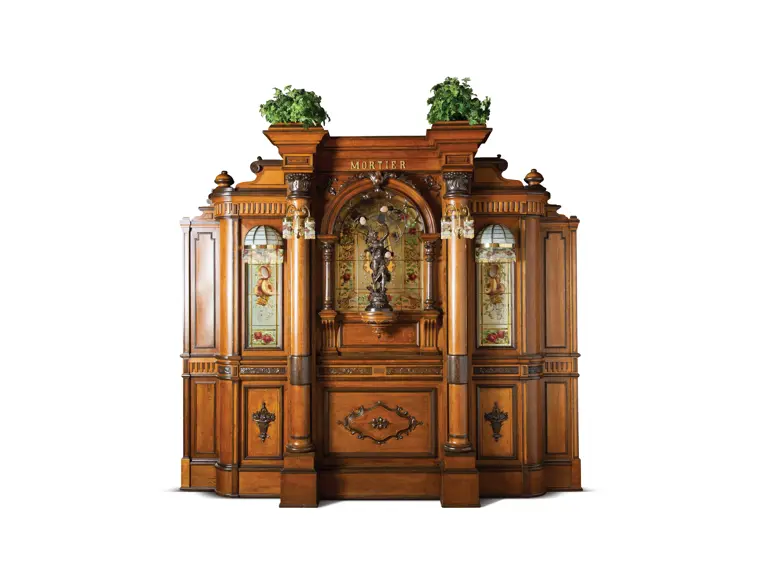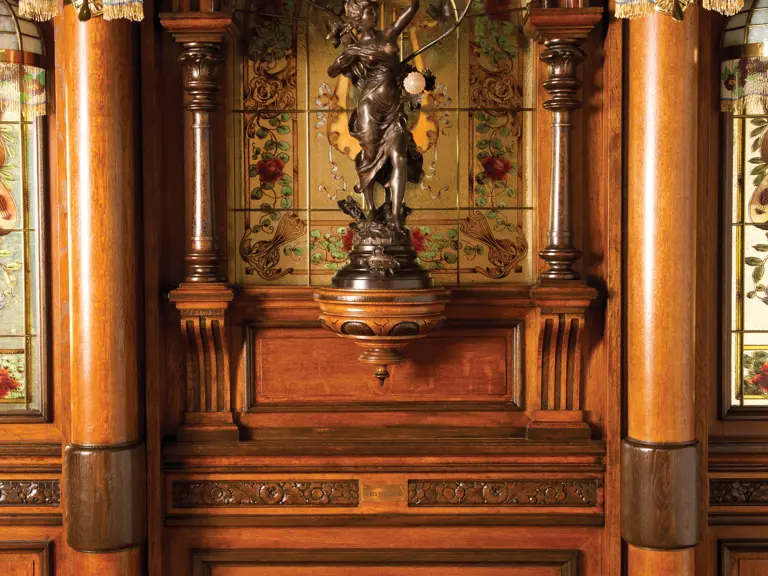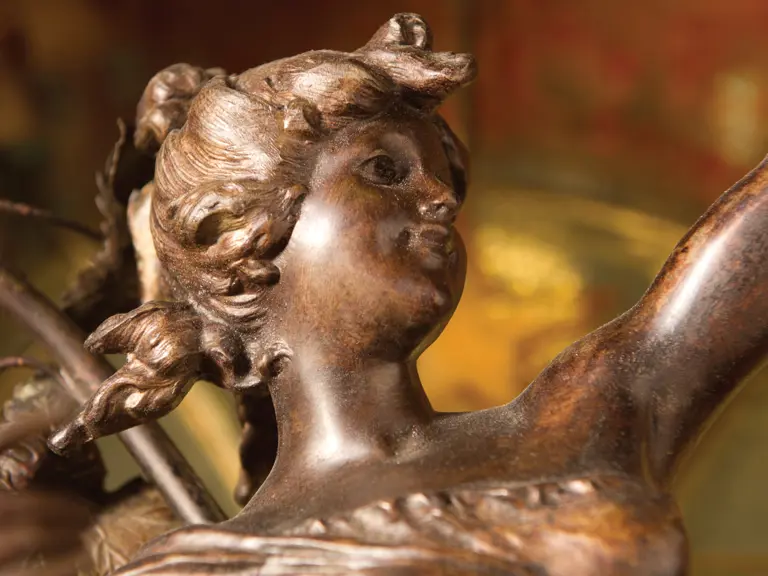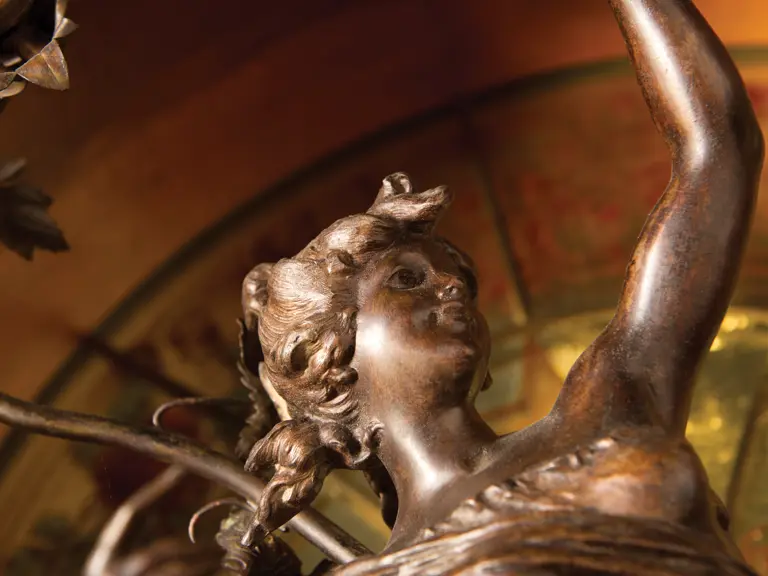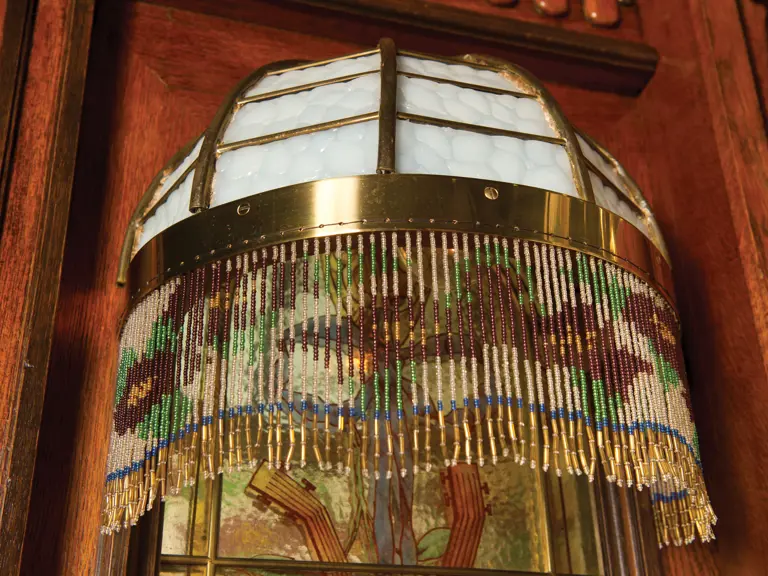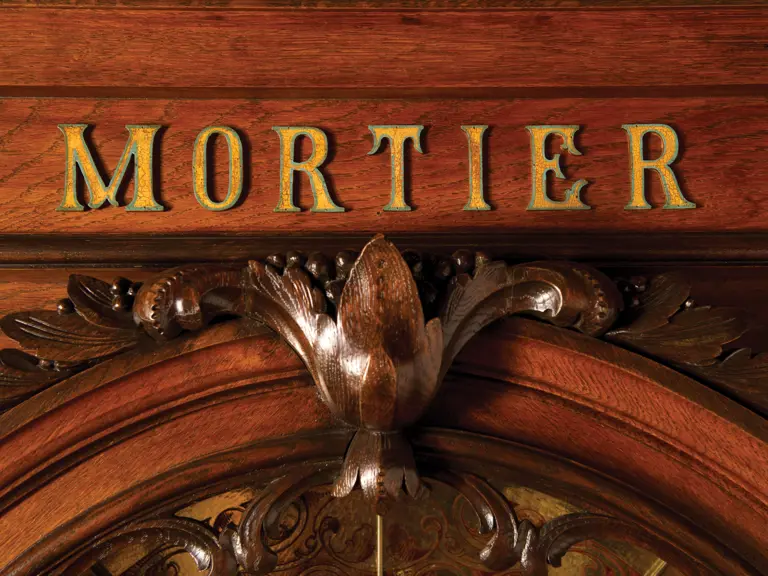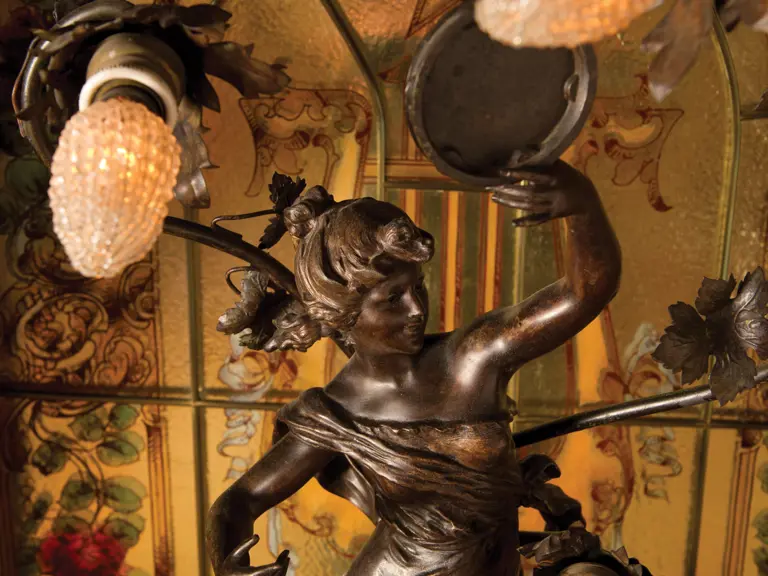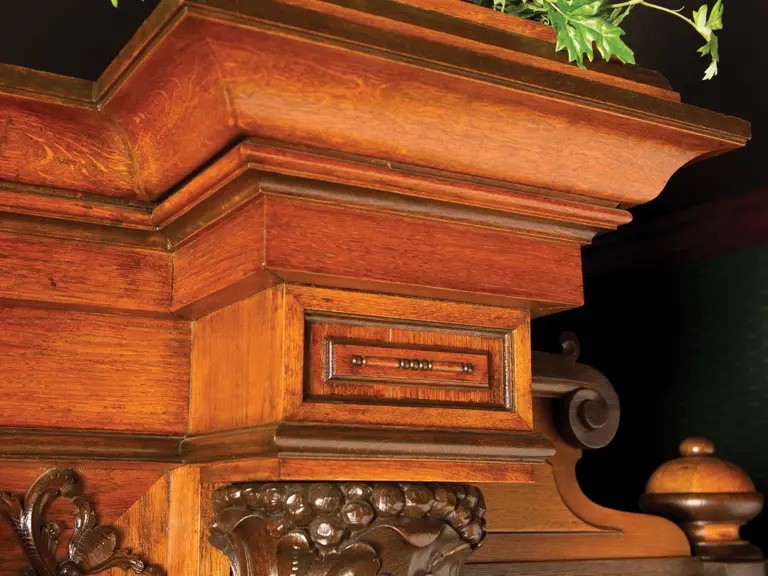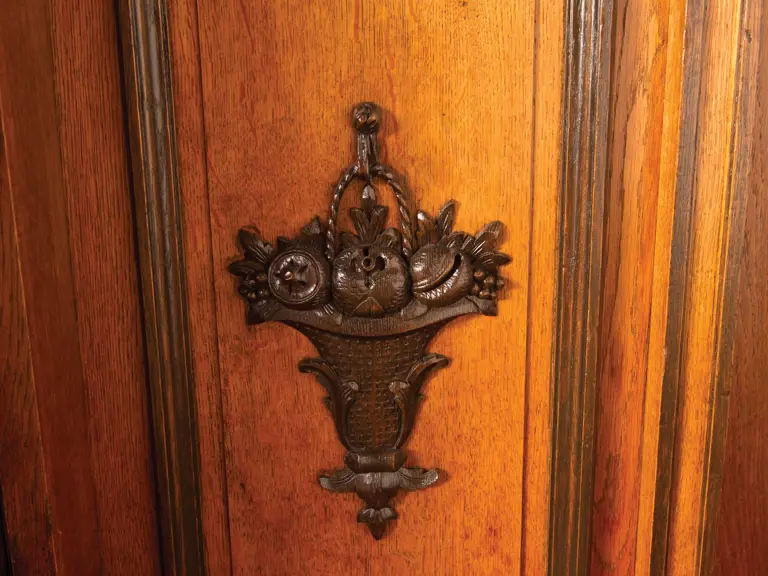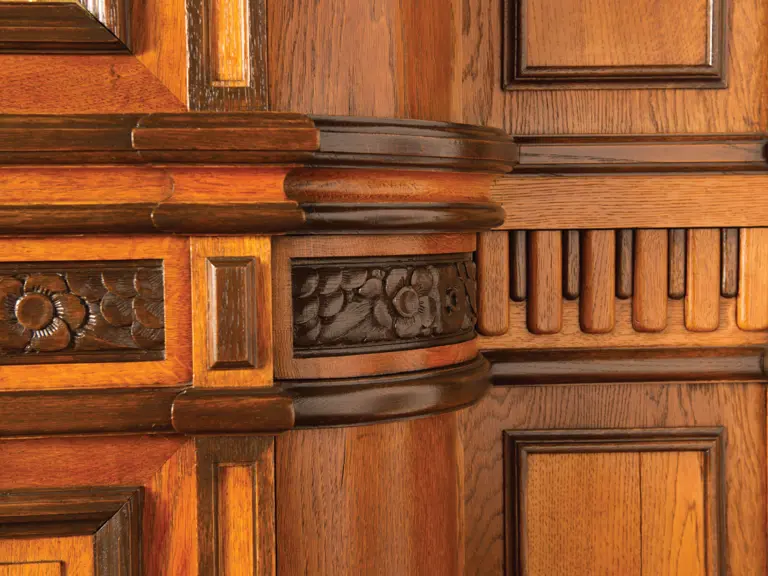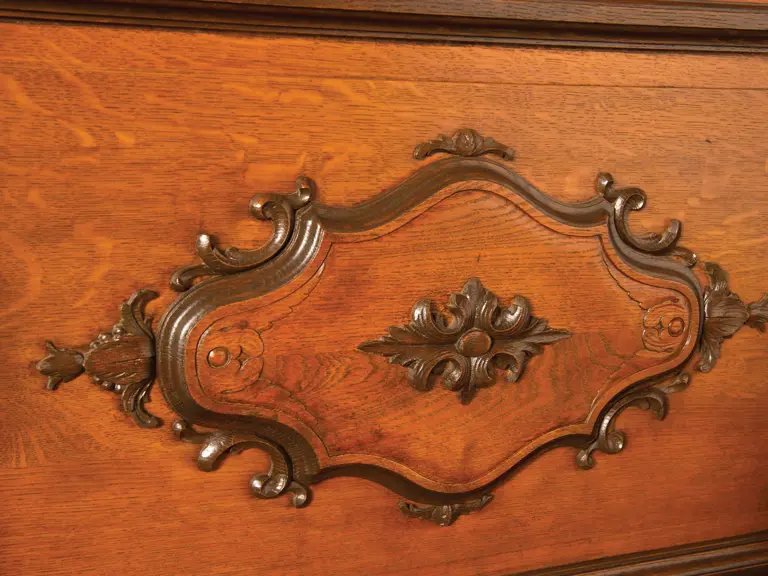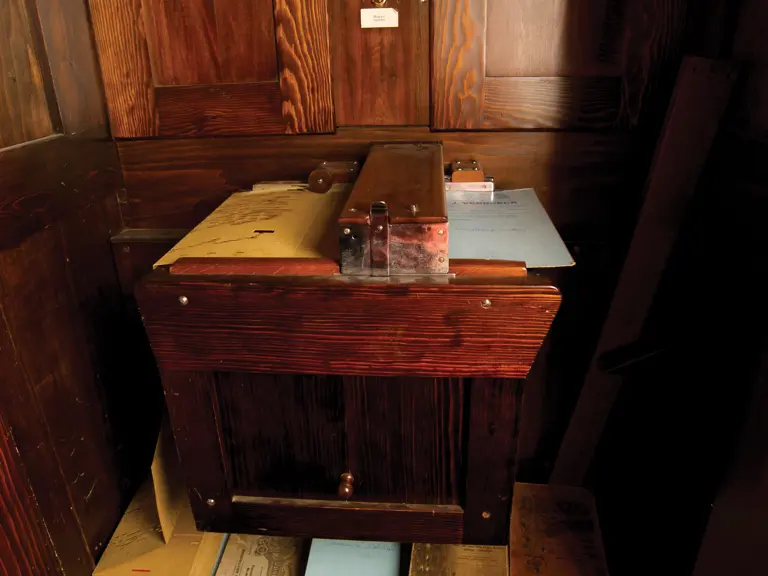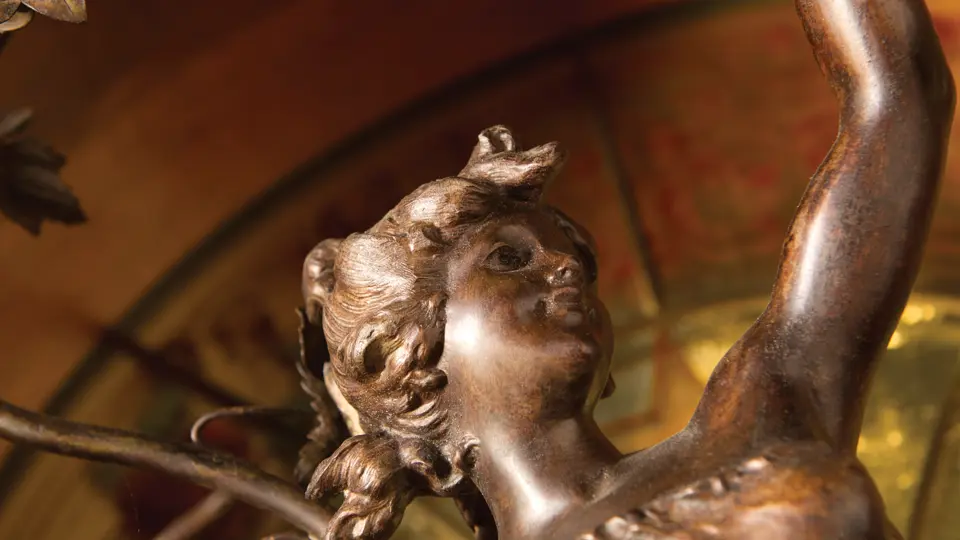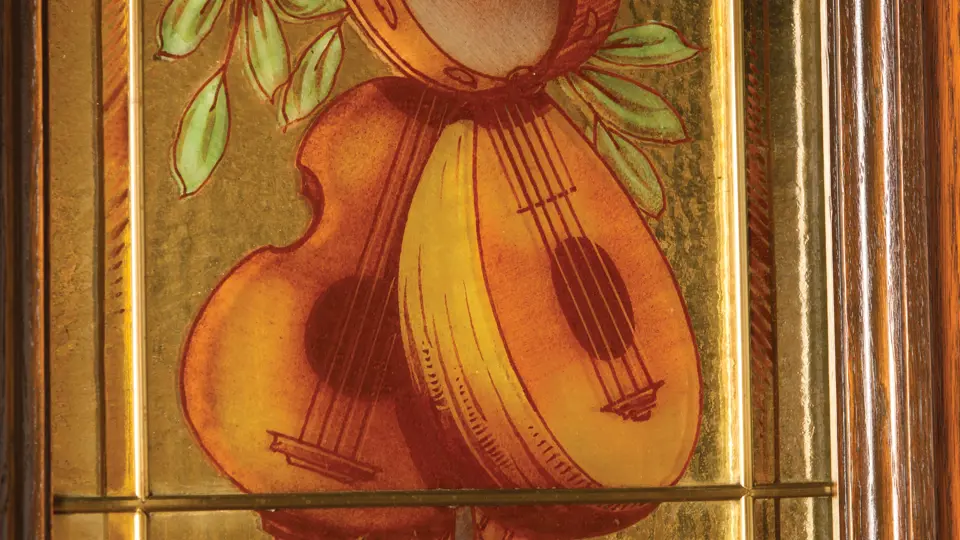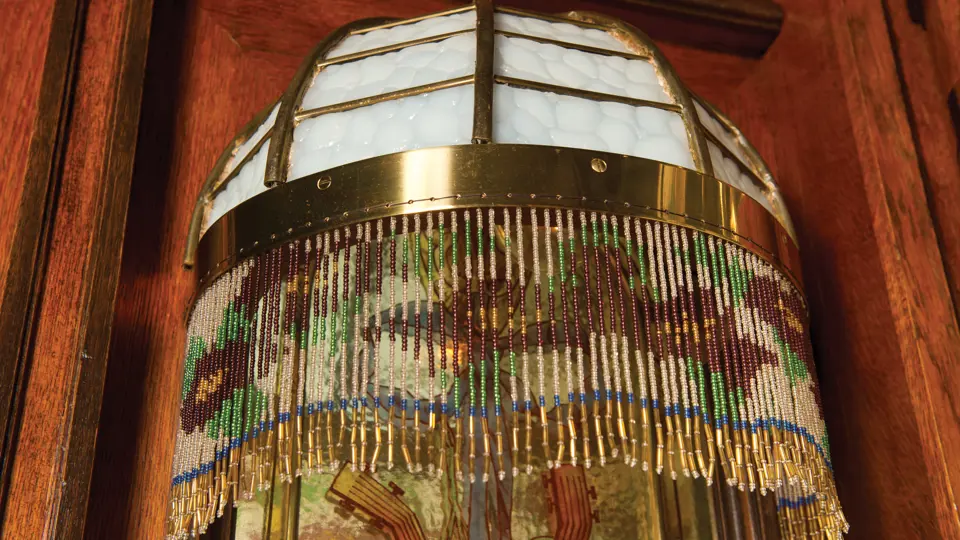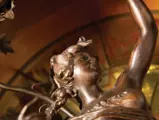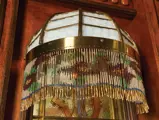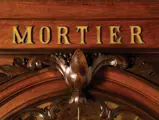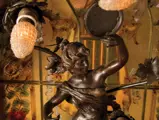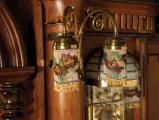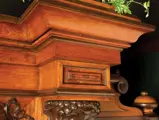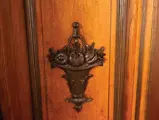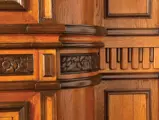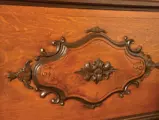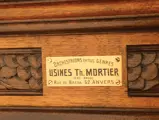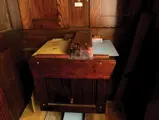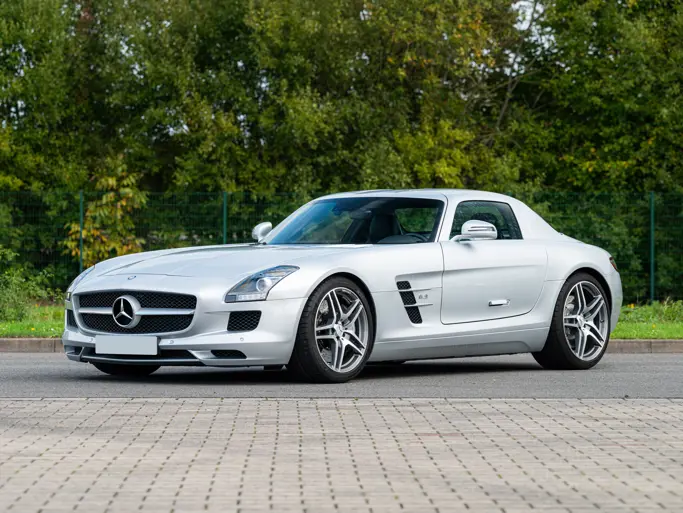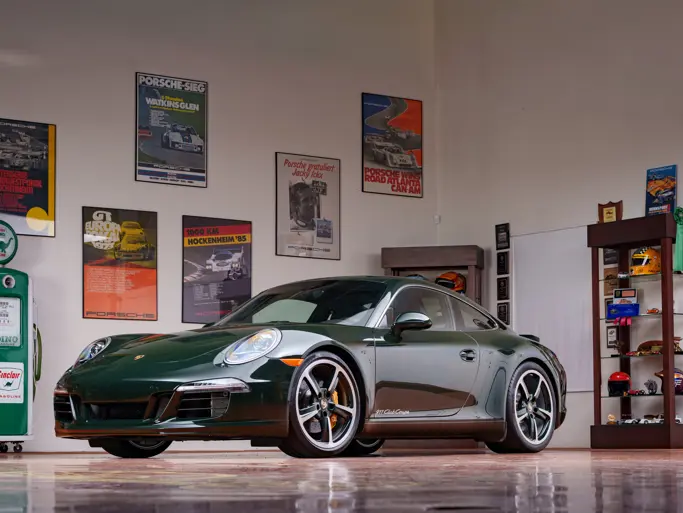 | Boca Raton, Florida
| Boca Raton, Florida
Theofiel Mortier, S.A. (Antwerp, Belgium)
This is a prime example of a beautiful orchestrion made in Antwerp, Belgium by the factory of Theofiel Mortier. These were made in several dozen models of which this is one of the largest. The typical instrument has multiple ranks of pipes plus percussion effects and plays from cardboard music books. These instruments were first introduced to American collectors by Q. David Bowers and Terry Hathaway, owners of Hathaway & Bowers, Inc., formed in California in 1967. Their 10,000 square foot showroom was a magnet for visitors, many of whom went on to form great collections, Siegfried Wendel and J.B. Nethercutt included.
Mortier produced some of the most elegant dance hall organs the world has ever known. Unlike most other major manufacturers of such instruments, Mortier did not sell them far from where they were made. Most were used in Belgium, some in neighboring Holland and some in France and Luxembourg. In Belgium in particular, Mortier had a virtual monopoly until in later years when Gebr. DeCap introduced a line of dance hall organs, mostly in the Art Deco style.
The façade of this Style 41 is attributed to master Mortier wood craftsman Paul Daelemans. Imported to the United States by G.W. MacKinnon in the 1970s, it was once in the Sanfilippo Collection, where, in 1988, it received a complete mechanical restoration by the master organ restorer John Hovancak of Dodgeville, Wisconsin. Instrumentation includes over 300 pipes with 10 automatic registers, drums, cymbal, triangle and wood block. Only three other organs are known with this style of façade. It is in superb condition, playing a wide variety of music from cardboard books and a modern digital MIDI system. A supply of music is included.
Reference: The Encyclopedia of Automatic Musical Instruments by Q. David Bowers (p. 894) and The Golden Age of Automatic Musical Instruments by Arthur A. Reblitz (p. 244-245). 133x112x70 inches.




